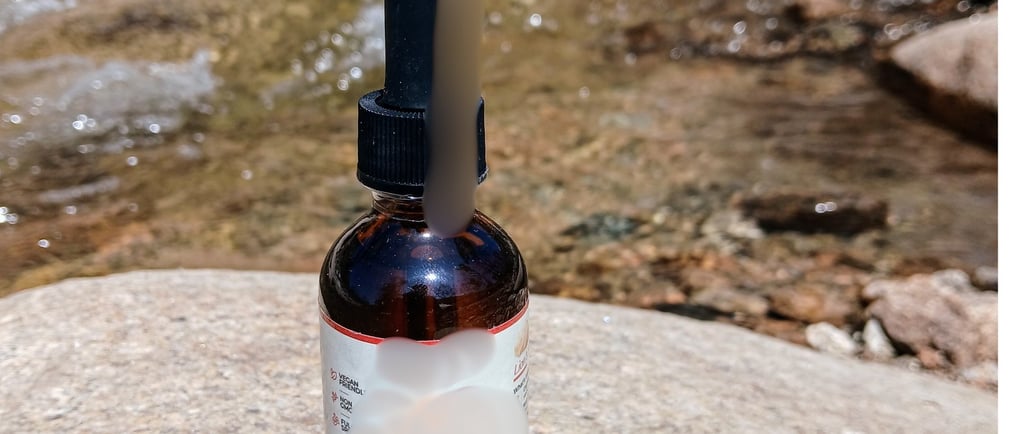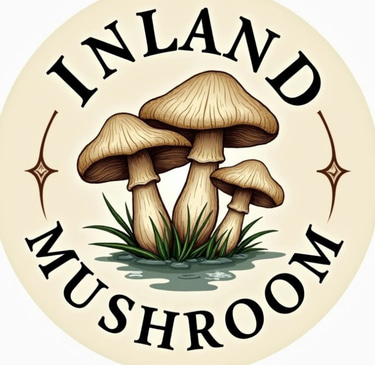Mushroom Tinctures Explained. What They Are and Why They’re So Popular
Curious about mushroom tinctures? Learn what they are, how they’re made, and why they’ve become so popular in wellness routines, plus my take on using them in coffee and shakes.
WELLNESS
10/16/20252 min read


Mushroom Tinctures Explained (and Why They’re So Popular Lately)
The Rise of Mushroom Tinctures
Mushroom tinctures seem to be everywhere lately — in coffee blends, on store shelves, and at local farmer’s markets. These tiny bottles pack a big reputation. They’re simple to use, long-lasting, and have become one of the most common mushroom wellness products around.
As a grower, the idea fascinated me. I’ve spent years learning to cultivate mushrooms from spore to fruit, but seeing them transformed into something shelf-stable and concentrated made me appreciate how versatile mushrooms really are.
What Exactly Is a Mushroom Tincture?
A mushroom tincture is basically a liquid extract made by soaking dried mushrooms in alcohol (and sometimes water) to draw out beneficial compounds. It’s the same principle herbalists have used for centuries — alcohol acts as a solvent to capture and preserve what’s inside the mushroom.
Many tincture makers use a double extraction method:
Alcohol soak – extracts alcohol-soluble compounds.
Hot water extraction – captures water-soluble elements.
Combination – the two liquids are blended for a full-spectrum result.
Once made, tinctures can last months or even years if kept sealed and away from sunlight.
Why People Like Them
What’s made tinctures so popular isn’t just the potential benefits — it’s how convenient they are.
They take up almost no space.
You can add a few drops to your drink without changing your routine.
They’re portable and long-lasting, making them perfect for busy people.
For anyone who already grows mushrooms, tinctures also make use of surplus harvests — especially hardy varieties like lion’s mane, reishi, or turkey tail that dry well and store easily.
Common Types of Mushroom Tinctures
Lion’s Mane: Often used for focus and clarity themes (without health claims).
Reishi: Known for calm and relaxation associations.
Cordyceps: Linked to energy and endurance discussions.
Chaga or Turkey Tail: Popular for their long traditional use in wellness tonics.
You’ll find both single-species tinctures and blends that mix several varieties for a more balanced profile.
Can You Make Them Yourself?
Yes — if you’re already comfortable drying and storing mushrooms, the next step is simple. Making a tincture mostly comes down to three things:
Dried mushrooms (roughly ground).
A high-proof alcohol like Everclear or vodka.
Patience — tinctures steep for two to six weeks.
While I haven’t made my own yet, I’ve researched the process and plan to try eventually. It’s surprisingly straightforward, and it gives growers another creative way to use what they produce.
My Take on Using Mushroom Tinctures
I’m not a tincture maker (yet), but I’ve started trying them in my daily routine just out of curiosity. I like that I can add a few drops to my morning coffee or protein shake without changing anything else. It’s an easy, low-effort way to include mushrooms in my day — and honestly, I just enjoy experimenting with new forms of something I already love growing.
Final Thoughts
Mushroom tinctures aren’t magic in a bottle — but they are a cool example of how far mushroom use has come. From growing blocks to powders, and now these tiny bottles of extract, it’s clear that mushrooms have moved beyond the kitchen into everyday wellness.
If you already grow your own mushrooms, making or trying tinctures is just another way to see how much potential is packed inside a single fruiting body.
Cultivation
Helping you master gourmet mushroom cultivation — on or off the grid.
© 2024. All rights reserved.
